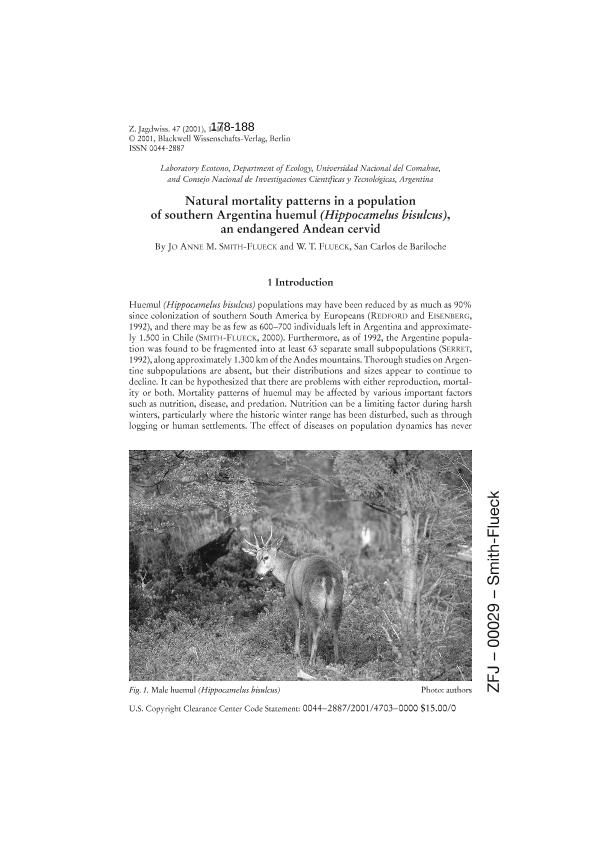Artículo
Natural mortality patterns in a population of southern Argentina huemul (Hippocamelus bisulcus), an endangered Andean cervid
Fecha de publicación:
12/2001
Editorial:
Blackwell Verlag GmbH Berlin
Revista:
Zeitschrift fur Jagdwissenschaft
ISSN:
0044-2887
Idioma:
Inglés
Tipo de recurso:
Artículo publicado
Clasificación temática:
Resumen
The huemul (Hippocamelus bisulcus), an endangered deer living in the Andes of southern South America, numbers 600-700 in Argentina, from at least 63 fragmented subpopulations. Very limited information exists on most populations, but there are indications that the distribution and population sizes continue to diminish, possibly through reduced reproductive rates, elevated mortality rates or both. This is the first analysis of the population ecology of a subpopulation in Argentina, made possible through the only existing compilation of numerous remains of dead huemul (n = 19). Surveys were conducted between 1993 and 1999 to locate and collect remains, which were found concentrated at lower elevations. The sex ratio of adults and subadults (n = 12) was 1:1, but could not be determined for fawns. Clear signs of predation was found in 37% of all deer: 50% among calves, 50% among subadults and 31% among adults. These signs occurred in 29% of adult females and 50% of adult males. Deaths occurred during winter as judged by the state of the male skulls, which indicated the phase of the antler cycle. Femur fat content of 3 deer averaged 93%. Predation signs frequently were clearly from puma (Puma concolor), which is the only natural predator of huemul. The high predation rate, high marrow fat content and no indications of deaths resulting from disease corroborate the pristine state of the of mature lenga (Nothofagus pumilio) forest. The area with a concentration of huemul carcasses appears to be the huemul's major winter habitat.
Archivos asociados
Licencia
Identificadores
Colecciones
Articulos(CCT - MAR DEL PLATA)
Articulos de CTRO.CIENTIFICO TECNOL.CONICET - MAR DEL PLATA
Articulos de CTRO.CIENTIFICO TECNOL.CONICET - MAR DEL PLATA
Citación
Smith Fluck, Anne M.; Fluck, Werner Thomas; Natural mortality patterns in a population of southern Argentina huemul (Hippocamelus bisulcus), an endangered Andean cervid; Blackwell Verlag GmbH Berlin; Zeitschrift fur Jagdwissenschaft; 47; 3; 12-2001; 178-188
Compartir
Altmétricas




